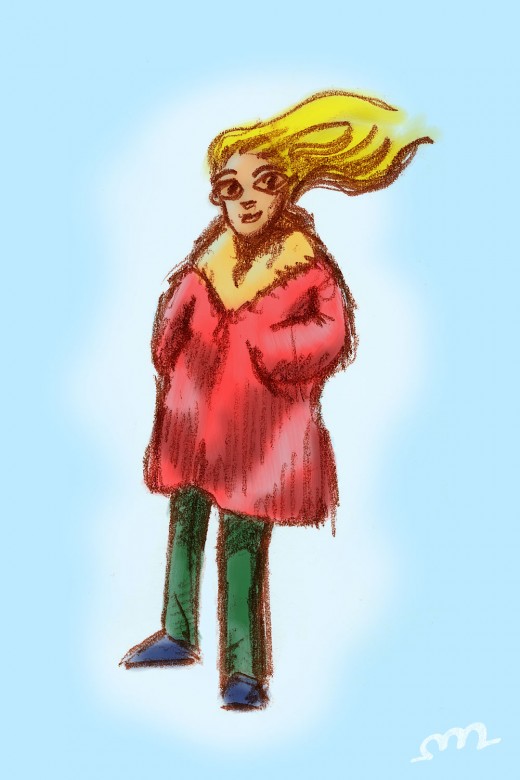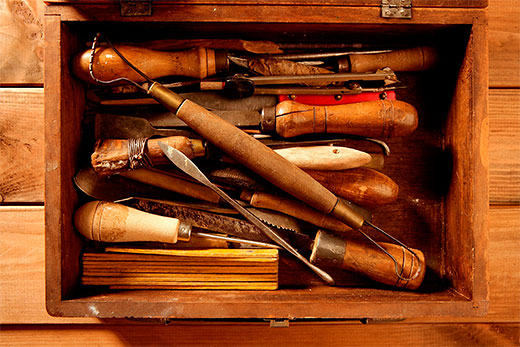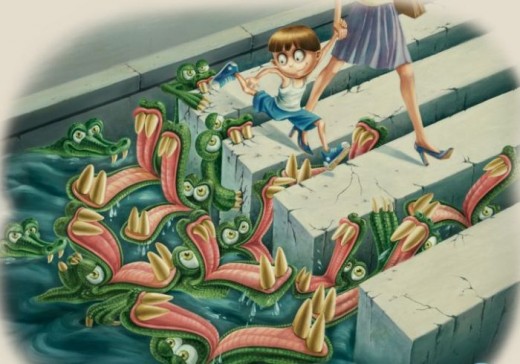September 16, 2013 - Comments Off on Jane ni Dhulchaointigh: The Magic Is in The Process
All Posts in process
June 14, 2013 - Comments Off on The MechCast 209: Rituals, Routines & Repercussions
The MechCast 209: Rituals, Routines & Repercussions
On our last podcast, recorded last December, we promised that we would kick-off 2013 with a podcast on productivity. As it happens we've been very busy and very productive. So, after a deadline-induced hiatus, The Mechcast is scheduled to make a return in the near future.
In preparation for the podcast we are all reading Mason Currey's Daily Rituals: How Artists Work. The book is a compilation of 161 inspired — and inspiring — individuals, among them, novelists, poets, playwrights, painters, philosophers, scientists, and mathematicians, who describe how they subtly maneuver the many (self-inflicted) obstacles and (self-imposed) daily rituals to get done the work they love to do.
You can read along and look for the podcast in a couple of weeks, where we'll discuss the many peculiar things we've learned about the people we admire.

Published by: antonioortiz in The Mechcast, The Thinking Mechanism
Tags: artists, creative process, podcast, process, rituals, routine, workflow
January 16, 2013 - Comments Off on The Wild Hunt
The Wild Hunt
Nearly 20 years ago in Monterey, I met David Carson at a HOW design conference. At conferences that followed, I found that he was always up for a conversation over a beer, providing that I picked up the tab. While that seems like a very elitist behavior to leave a young designer with the burden of paying for his beverages, I didn't mind. I was impressionable, and enjoyed the fact that I could have a yearly chat with someone I considered a design hero.
Now, one of the things I learned from Carson was a list of the two items that every designer should carry at all times. I have eagerly shared this advice with designers whom I've had the honor of speaking with over the past 10 or so years as a lecturer at conferences and events. These items are: a camera and a sketchbook. You can add your own elements (a pencil, marker, pen or brush is obviously important and food helps) to the “toolbox”, but the importance of what I learned from that simple and now obvious and likely unintentional “advice” was that as a designer, part of our job is to DOCUMENT. Whether by collecting printed doodads and trinkets from our travels or simply to photograph or sketch the things that we haven't seen before, we are squirrels collecting nuts of creative nutrition to bury in our books and save them for later, when we're hungry for inspiration.
...we are squirrels collecting nuts of creative nutrition to bury in our books and save them for later, when we're hungry for inspiration
Fast forward to 2013. In thinking about those years past, I realized this morning that my recollection of conversations with Carson may be foggy. Sometimes we only remember what we want to remember - the good stuff, the takeaways of past experiences. Regardless, we now live in a world where digital devices allow us to capture - in increasing quality and seemingly unlimited quantity - our surroundings. Maybe it's easier to only have to carry around one device to photograph, write and capture life's experiences - or maybe the omnipresence of these devices, lessens the actual experience itself. Rather than simply experiencing life as it happens, perhaps we are now constantly on the wild hunt for stuff. We miss details while searching for things to happen.
Possibly the best experiences happen when we're not looking for them. In 1996, David Carson was sitting at the bar in Monterey, California, at a design conference holding court with some young impressionables like me. I joined the conversation and stayed until everyone else was too tired or drunk to continue. I never took a picture, sketched a sketch or saved an item to boost my memory of that evening. Maybe he told me to carry a camera and a sketchbook with me, or maybe he told me to get some AR-10 upper's next time we went hunting. I was too drunk to understand properly. The point is that it doesn't matter. The tool in the designer's pack that David didn't mention was the brain -- to contain, process and recall what is important of our precious memories at a later date.
The tool in the designer’s pack that David didn’t mention was the brain — to contain, process and recall what is important of our precious memories at a later date
And if I ever see David at another conference, I'll once again listen more than speak, casually mention my point about the brain, and in the end, maybe let him buy me a beer.
Published by: davefletcher in The Internal Mechanism
Tags: david carson, growth, inspiration, process, recollection, thinking
January 7, 2013 - Comments Off on Maturity Missed
Maturity Missed
In the infancy of this New Year, we are given the rare opportunity to experience a certain childlike wonder. All is new, all is possible. Sadly we increasingly lose this ability as we grow older and become more set in our ways. The world loses some of its luster. But truly the magic of the world can always be found in ever more beautiful, if not less obvious, places. An intriguing conversation with a stranger. The intricate patterns frost plays across your window. Remove yourself from preconception and seek the inspiration within childlike wonder.

Switching to a less intense process of this week. A quick colored doodle of a lovely cartoon lady in a warm winter coat.
It's hard to be awed like a child simply because of knowledge. Knowledge, by it's very nature, is the cure for curiosity and therefore the fanciful wanderings of childhood. Bridge to Terabithia would be quite boring if the reader were aware of the stark realities surrounding the children's escapist retreat. Many famous creative works play on the innocence of children and the resulting conclusions they make, whether cute or skewed. This series by Pierrette Diaz similarly illustrates what children may see when confronted with the mysterious realities of life. Her style perfectly embodies that magic of youth and makes me reminisce about games of "keep off the lava." So don't avoid the silly ideas that may flit through your mind, they're often the most enjoyable.
There are many fun activities for children to participate in. Most serve to foster their creativity, intelligence, or maybe just waste their time. Perhaps the most well known of all are the Boy and Girl Scouts of America. Both groups (and unfortunately many marketers) have realized that if there's one thing we really love, it's collecting stuff, often being badges. Fittingly, DIY, a part of the growing maker movement, motivates it's users of all ages to learn new skills just like the scouts, sharing their accomplishments and projects with other users via digital badges. The style is undeniably gorgeous with its crisp clean colors. Furthermore I love the entire idea behind the site. It has so many great projects one could pursue with the kids to rediscover the wonders of our world.
It's not always easy to overcome our jaded adult views though. Time is inevitable and invariably becomes less and less valuable as we grow older: each second becoming an ever diminishing portion of the sum total. Thus it is up to us to imbue every moment with value. This BAFTA award winning short, The Eagleman Stag, is a curious exploration of age and time. I love the pure white style. It appears to be made completely of foam and paper which is used to great affect.
The Sketching Mechanism is a series of weekly posts, published on Mondays, containing the artistic musings of Mobile Designer/Developer Ben Chirlin during our Monday morning meeting at the NY Creative Bunker as well as his inspiring artistic finds of the week.
Published by: benchirlin in The Sketching Mechanism
Tags: knowledge, new year, process
May 11, 2012 - Comments Off on Building new sites… with some old data
Building new sites… with some old data

When building a new site for a client, migrating data from an old site or system can be a daunting task. There are several excellent modules such as feeds_import which can help move data that is already online in one form or another via rss/xml and so on. Sometimes there is content which needs to get onto the site that lives off-line or for other reasons isn't compatible with an existing import module- for that you can write some code to help out.
For one project we had to import a list of users which came from a CSV export from a spreadsheet. We really just needed users in the system to be able to assign them as authors of content. The following code is what we used to read in the CSV file and create the users. Any CCK field can be populated with this, here we are adding First, Middle and Last name fields before submitting.
This script relies on Drush and the Forms API to bootstrap drupal and feed it the form submission.
As with all things Drupal, there are more ways to accomplish a task than there are tasks to accomplish.
/**
* Import users via a CSV
*
*/
// Initialize a counter to track the number of users processed
$i = 0;
// Check for the .csv file in the particular directory. We create a <site>_util directory
// to put these sorts of scripts.
if (($handle = fopen("./sites/all/modules/custom/site_util/new-users.csv", "r")) !== FALSE) {
// While there are rows of data in the file, keep looping through.
while (($data = fgetcsv($handle, 0, "," )) !== FALSE) {
// Read in and sanitize data from the CSV file.
// Here we assign each column to a variable.
$fname = utf8_encode(trim($data[0]));
$mname = utf8_encode(trim($data[1]));
$lname = utf8_encode(trim($data[2]));
$email = trim($data[3]);
// Create random 8 character password.
$pass = user_password();
// Initialize the $form_state array which will be passed to drupal_form_submit.
$form_state = array();
// Tell drupal_form_submit what operation this form is performing
$form_state['values']['op'] = t('Create new account');
// Drupal 7 requires this second password field to create users.
$form_state['values']['pass']['pass1'] = $pass;
$form_state['values']['pass']['pass2'] = $pass;
// Populate the name and email elements of $form_state.
$form_state['values']['field_profile_fname']['und'][0]['value'] = $fname;
$form_state['values']['field_profile_mname']['und'][0]['value'] = $mname;
$form_state['values']['field_profile_lname']['und'][0]['value'] = $lname;
$form_state['values']['mail'] = $email;
// Build a human readable Username. We are using email as the primary login.
// Since the users do not always have a middle name we will use a
// a ternary operation to prevent adding a second space between the
// first and last name.
$form_state['values']['name'] = $fname . ' ' . ($mname ? $mname . ' ' : '') . $lname;
// Since we're running on the command line, we'll add some status information.
print('Adding: ' . $form_state['values']['name']. "n");
// Finally, we submit the built $form_state array to Drupal's user_register_form.
drupal_form_submit('user_register_form', $form_state);
// Increment the counter.
$i++;
}
}
print("Processed: " . $i . " users.");
Save this code to a file and then run execute it with drush:
% drush scr script.php
Thats it. It should import your users and report at the end.
You'll need to make sure the data going in is sensible, valid emails, names etc.



